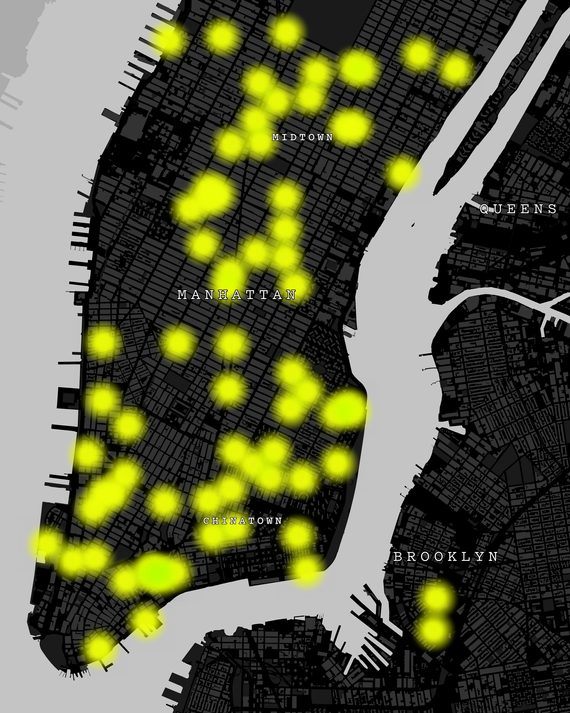
At the corner of Spring Street and Elizabeth Street. In the subway station under the Oculus. In a nail salon in Chinatown. Even before the city shut down in March 2020, the New York City Commission on Human Rights began fielding an influx of reports about anti-Asian attacks happening across the city. According to Carmelyn Malalis, chair and commissioner of the agency, as early as January 2020, “We began hearing from community members that the rhetoric that was coming from the White House at that time was really having an impact on their businesses and their communities.” At its first town hall about the issue in April, more than 1,200 people logged in — the maximum capacity.
In 2020, the agency received more than 200 reports of anti-Asian discrimination at workplaces and in housing searches, in restaurants and stores, along with street incidents. That’s a sevenfold increase from the 30 reports logged in 2019. This spike is undoubtedly tied to an increase in incidents, but also reflects more multilingual outreach by the agency to urge community members to report. That work is ongoing — many people are still unaware that they can report incidents by phone or online to the city’s Commission on Human Rights, especially if they are uncomfortable going to the police.
The Commission’s total figures on anti-Asian violence are larger than the NYPD’s (which only logged 29 anti-Asian hate crimes in 2020) because they not only include hate crimes covered under criminal law (for example, a hate symbol graffitied onto a house), but also discrimination covered under civil law. This can include an employer moving an Asian employee out of a public-facing role to one that has no public contact, even though he or she is exceptional at their role, or a landlord refusing to rent to Asian tenants, telling them that they don’t want COVID in the building. The agency also collects incidents through social media, community partners, elected officials, and media reports.
From the more than 200 reports, Curbed mapped nearly 140 incidents for which locations were known, collected since February 2020 through April of this year, mostly from data provided by the Commission on Human Rights. The map reveals that most of the reports are concentrated in Manhattan, with a cluster of incidents happening in Flushing, as well as in Chinatown and the Lower East Side, where many Asian Americans work and live.
Normally, the Commission on Human Rights deals with instances of discrimination between an employer and employee, a housing provider and tenant, or similar “covered” relationships where “it’s frankly much easier for our agency to intervene, because of our jurisdiction in those spaces,” says Malalis. In such cases, the agency might initiate an investigation, make a determination of harassment, or award monetary damages, to be paid by the entity that violated the law. However, many anti-Asian incidents over this past year have happened in subway stations and train cars, on the sidewalk, and other public spaces not necessarily covered under civil-enforcement law. “The challenging thing there is it’s not about changing a policy or practices. It’s about addressing the underlying hate,” says Malalis.
For the agency, that has meant providing more multilingual bystander-intervention trainings in communities around the city that teach people what they can do when they witness such incidents. The Commission has also launched a public-art campaign featuring subway and bus-shelter posters by artist-in-residence Amanda Phingbodhipakkiya, with statements like “I am not your scapegoat” and “This is our home too” in multiple languages. And, in more recent weeks, the agency has increasingly sought to adopt more restorative-justice approaches, talking with business improvement districts in Manhattan Chinatown, Sunset Park, and Flushing about how they would like to approach these attacks beyond the involvement of law enforcement. In cases involving other protected groups, restorative-justice approaches have resulted in companies participating in educational programs that teach them the history of discrimination against the group in question and in executives taking part in anti-racism trainings or creating an internship program that offers opportunity to disadvantaged groups. What restorative justice might mean for communities experiencing acts of random violence in public, rather than discrimination from a specific entity, is still being hashed out.
This framework, says Malalis, recognizes that beyond the orbit of a single incident, the impact of discrimination and hate on a group is much more long-term and systemic, especially “the general feeling of fear and uncertainty” it spreads throughout the community at large. “People want to know not just that the individual who harmed them is not going to harm them again, but, even greater than that, they want to know that they are safe in community,” says Malalis. “Whether they are Asian American, or Black, or transgender — you name the community — they want to know that there are other people around them who will keep them safe from being attacked.”






